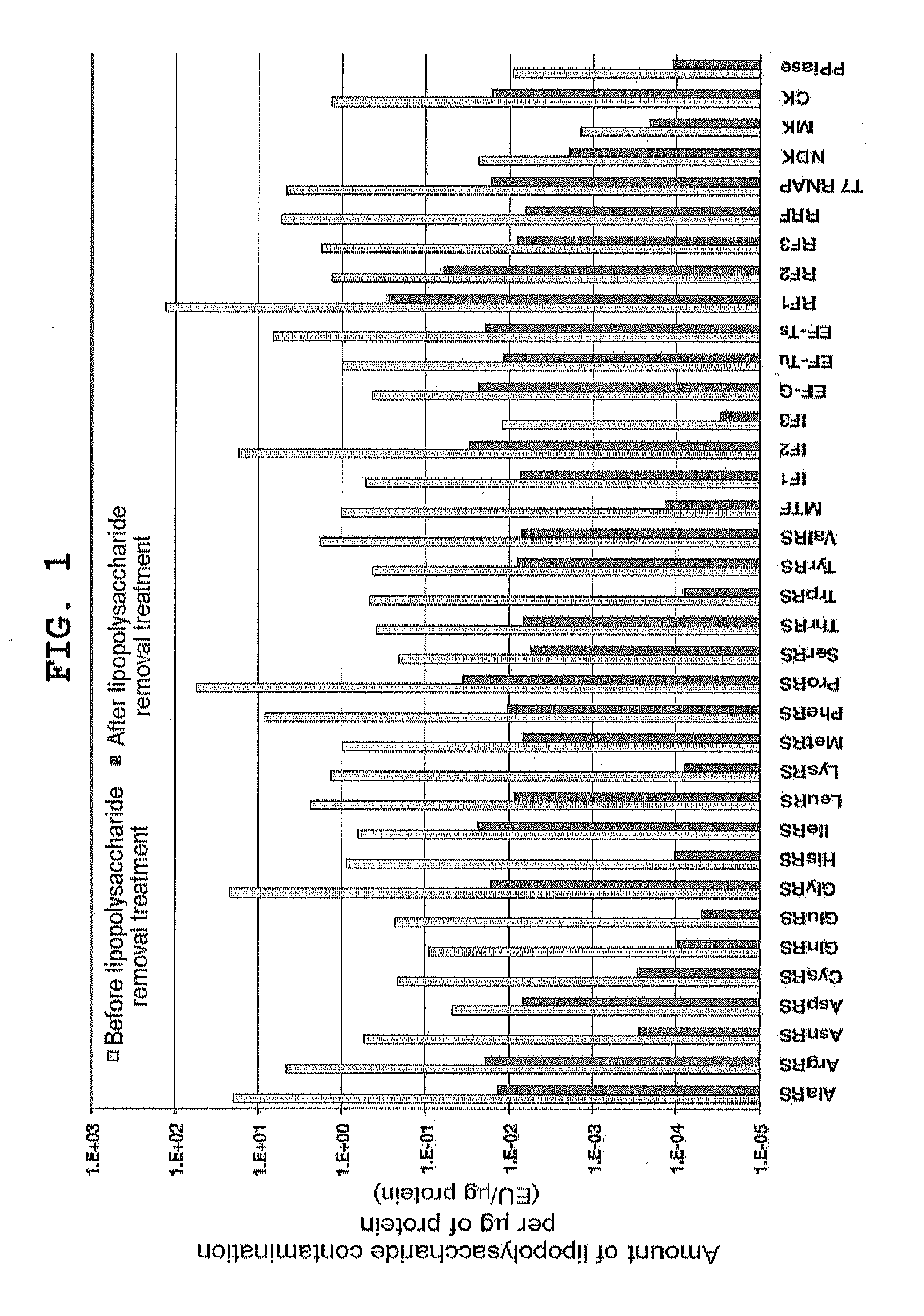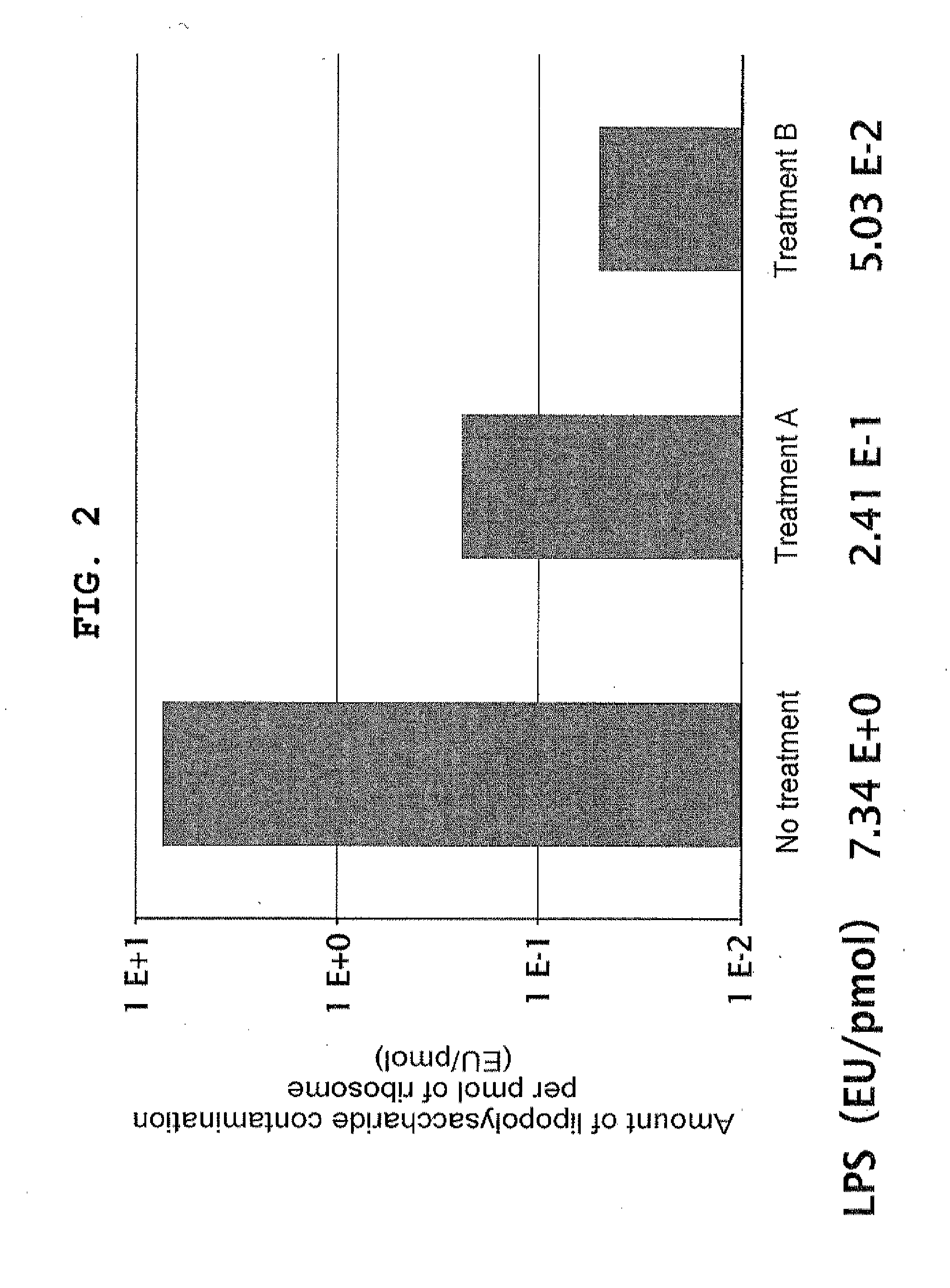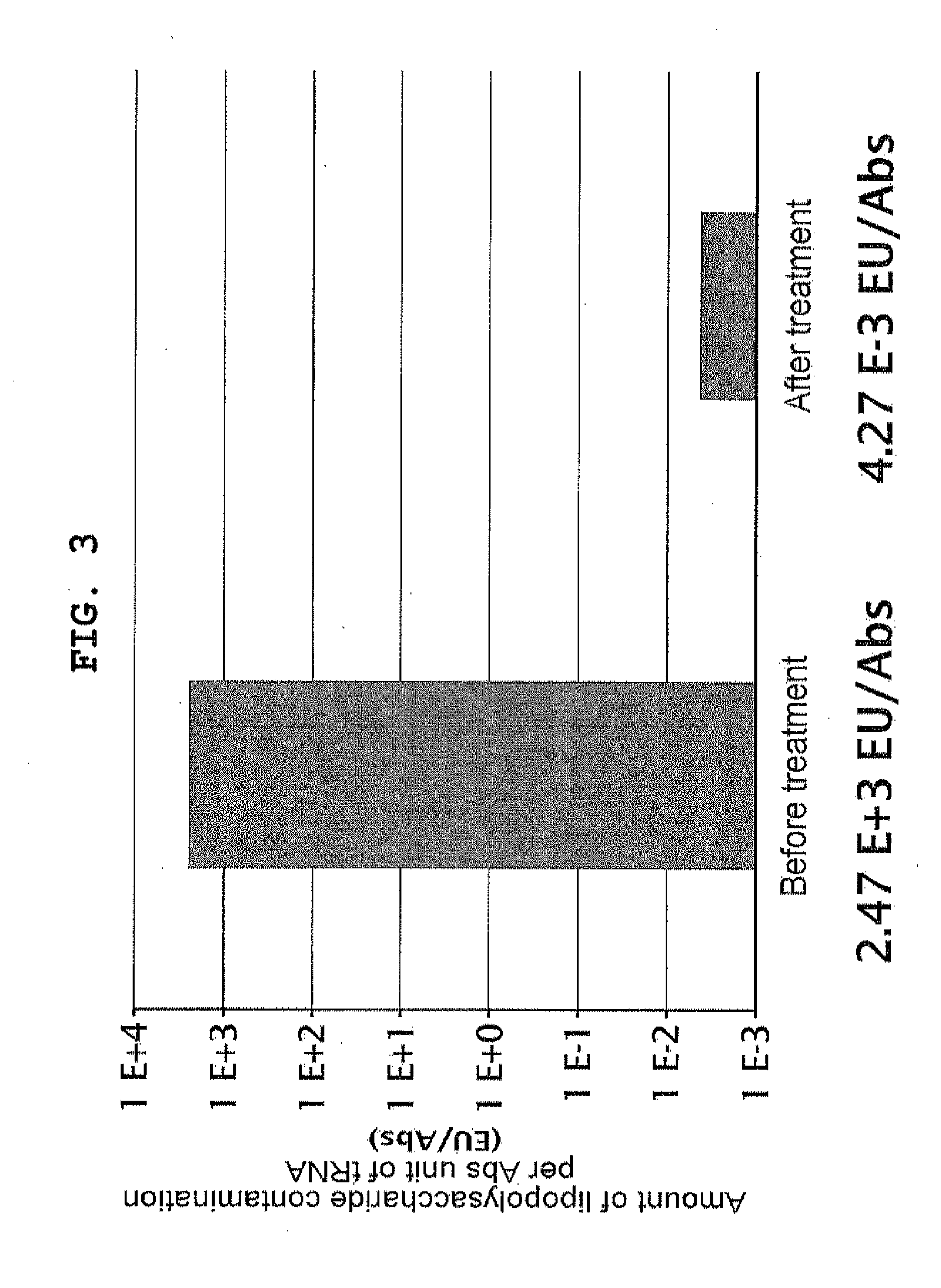Composition for synthesizing protein with reduced lipopolysaccharide contamination, method for producing protein using said composition
a technology of lipopolysaccharide and composition, which is applied in the direction of enzymology, sugar derivates, transferases, etc., can solve the problems of rna and protein degradation, overconsumption of energy, etc., and achieve the effect of reducing the background due to non-specific binding, reducing the contamination of lipopolysaccharide, and high accuracy
- Summary
- Abstract
- Description
- Claims
- Application Information
AI Technical Summary
Benefits of technology
Problems solved by technology
Method used
Image
Examples
example 1
Removal of Lipopolysaccharide from Proteinous Factor Solution
[0156]Lipopolysaccharide was removed from already purified proteinous factors with reference to Reichelt et al., (2006) Protein Expr Purif., vol. 46, p. 483. Specifically, this process was performed as described below. A solution containing 0.5 to 1 mg of each of His-tagged protein factors independently purified according to Japanese Patent 4061043 was diluted to 450 μl with Binding Buffer (50 mM Tris-HCl pH 8, 500 mM NaCl, 20 mM imidazole, 7 mM 2-mercaptoethanol). Added to the diluted protein solution was 100 μl of 50% (v / v) Ni-Sepharose FF (GE Healthcare) suspension; after mixing at 4° C. for 1 hour, the mixture was applied to MicroBiospin column (Bio-Rad). The resin was washed with 500 μl of Binding Buffer supplemented with 0.1% Triton X-114 10 times, and with Binding Buffer 5 times, after which the protein was eluted with 200 μl of Elution Buffer (50 mM Tris-HCl pH 8, 500 mM NaCl, 400 mM imidazole, 7 mM 2-mercaptoethan...
example 2
Removal of Lipopolysaccharide from Ribosome Using Cholic Acid (Treatment A)
[0157]Ribosome was prepared from Escherichia coli using a method disclosed in JP-A-2008-271903 with the partial modification as below. Sodium cholate was added to the eluted solution from hydrophobic column to make 0.5% (w / v), and the mixture was incubated at 4° C. for 1 hour, after which the mixture was gently placed on Sucrose Buffer (20 mM HEPES-KOH pH 7.6, 10 mM Mg(OAc)2, 30 mM NH4Cl, 30% sucrose, 7 mM 2-mercaptoethanol) and centrifuged at 4° C. at 100,000×g overnight, and the ribosome was recovered as a precipitate. The precipitate was dissolved in 70S Buffer (20 mM HEPES-KOH pH 7.6, 6 mM Mg(OAc)2, 30 mM KCl, 7 mM 2-mercaptoethanol), and the absorbance at 260 nm was measured to determine the concentration of the ribosome solution.
example 3
Removal of Lipopolysaccharide from Ribosome Using Triton X-114 (Treatment B)
[0158]Ribosome was prepared from Escherichia coli by a method disclosed in JP-A-2008-271903. 900 μl of ice-cold 70S Buffer supplemented with 1% Triton X-114 was added to 100 μl of about 30 μM ribosome fraction prepared, and they were gently mixed. The mixture was allowed to stand for 5 minutes, and then further allowed to stand at 30° C. in an incubator for 5 minutes. The turbid mixture was centrifuged at room temperature at 20,000×g for 5 minutes to separate into two phases. About 900 μl of the upper phase was recovered and transferred onto ice, after which 100 μl of ice-cold 70S Buffer supplemented with 10% Triton X-114 was added, and they were gently mixed. The mixture was allowed to stand on ice for 5 minutes, and then further allowed to stand at 30° C. in an incubator for 5 minutes. The turbid mixture was centrifuged at room temperature at 20,000×g for 5 minutes to separate into two phases. This process...
PUM
| Property | Measurement | Unit |
|---|---|---|
| Composition | aaaaa | aaaaa |
| Elongation | aaaaa | aaaaa |
| Content | aaaaa | aaaaa |
Abstract
Description
Claims
Application Information
 Login to View More
Login to View More - R&D
- Intellectual Property
- Life Sciences
- Materials
- Tech Scout
- Unparalleled Data Quality
- Higher Quality Content
- 60% Fewer Hallucinations
Browse by: Latest US Patents, China's latest patents, Technical Efficacy Thesaurus, Application Domain, Technology Topic, Popular Technical Reports.
© 2025 PatSnap. All rights reserved.Legal|Privacy policy|Modern Slavery Act Transparency Statement|Sitemap|About US| Contact US: help@patsnap.com



